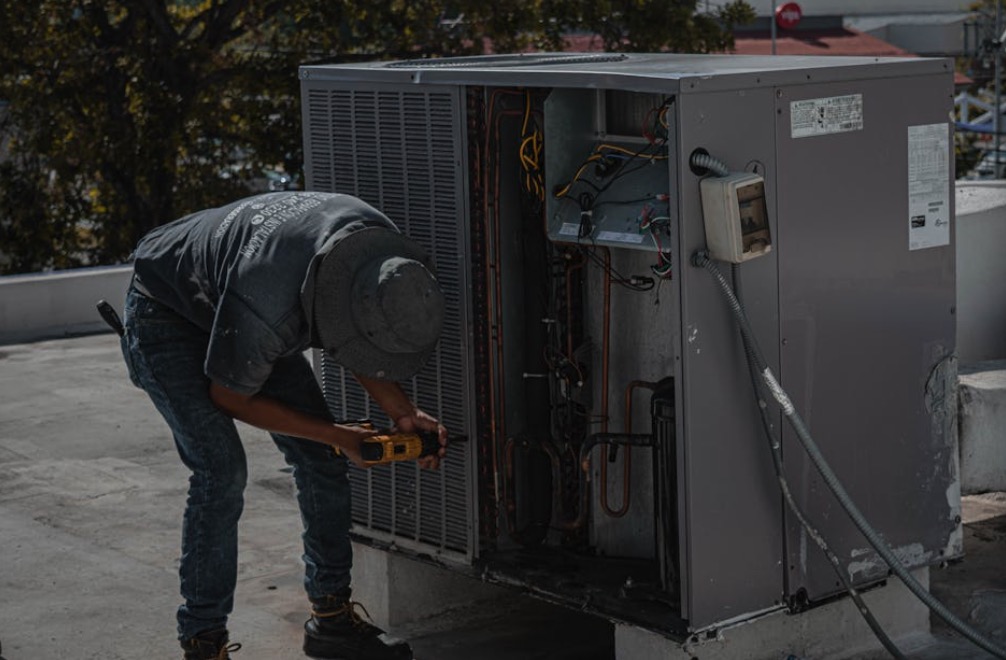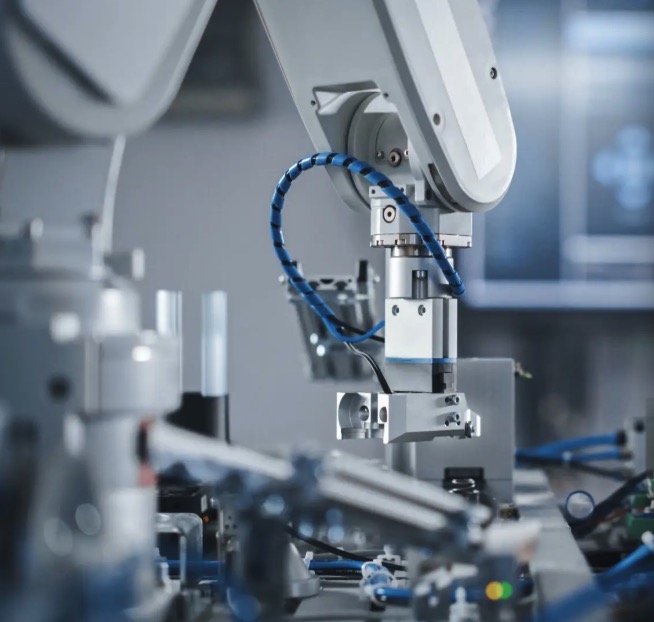Thermocouples are essential devices used for temperature measurement, converting thermal energy into electrical voltage. They consist of two different metals joined at one end, creating a junction that produces a voltage correlated to the temperature difference between the junction and the reference end. These temperature sensors are valued for their wide range, durability, and quick response times in various applications.

In numerous industries, thermocouples play a crucial role in monitoring and controlling temperatures, ensuring processes run efficiently and safely. They are commonly found in manufacturing, HVAC systems, and scientific research settings. By understanding how thermocouples work and where they can be applied, individuals can make informed decisions about temperature measurement solutions relevant to their needs.
Fundamentals of Thermocouples

Thermocouples are crucial temperature measurement devices that operate based on the principles of thermoelectric effects. They convert thermal energy into electrical voltage, making them widely used across various industries and applications.
What is a Thermocouple?
A thermocouple consists of two different metal wires joined at one end, creating a junction. When the junction experiences a temperature change, it generates a measurable electromotive force (EMF). The magnitude of this EMF corresponds to the difference in temperature between the junction and the ends of the wires.
Thermocouples are classified into different types based on the metals used. Common types include K, J, T, and E thermocouples, each with unique temperature ranges and accuracy. Their simplicity, durability, and wide temperature measuring range make thermocouples ideal for applications in research, manufacturing, and HVAC systems.
Understanding the Seebeck Effect
The Seebeck effect is the principle that underlies the operation of thermocouples. This phenomenon occurs when two dissimilar metals at different temperatures create a voltage due to the movement of charge carriers. As temperature increases, charge carriers in one metal gain energy, causing them to migrate toward the cooler metal.
The generated thermoelectric voltage can be calculated using the formula:
[ V = S \times \Delta T ]
Where:
- ( V ) = voltage generated
- ( S ) = Seebeck coefficient (specific to the metals used)
- ( \Delta T ) = temperature difference
This effect is critical for temperature measurement, as it allows thermocouples to produce a voltage that can be correlated to temperature changes accurately. The specific Seebeck coefficients of the metals determine a thermocouple’s sensitivity and range, influencing its effectiveness in various applications.
How Thermocouples Work
Thermocouples operate based on the thermoelectric effect, generating an electrical signal that corresponds to temperature differences. Their functionality also involves a crucial concept called cold junction compensation, ensuring accurate measurements in varying environmental conditions.
Thermoelectric Voltage and Response Time
Thermocouples generate a voltage called thermoelectric voltage when two dissimilar metals join at different temperatures. This voltage is proportional to the temperature difference between the measuring point and the reference junction. The specific amount of voltage produced depends on the materials used and their sensitivity to temperature changes.
Each type of thermocouple has a defined sensitivity, making certain types more suitable for specific applications. The response time of a thermocouple is influenced by its construction and size. Smaller and thinner thermocouples typically respond more quickly to temperature changes, making them ideal for dynamic measurements.
Cold Junction Compensation
The concept of cold junction compensation addresses the reference junction’s temperature, which is not always at a standardized point. When measuring temperature, the thermocouple creates a voltage based on the temperature difference between the hot and cold junctions.
To ensure accurate readings, a reference temperature is established, typically at the connection point to the measurement system. Common methods for cold junction compensation include using an additional temperature sensor at the cold junction. This allows the system to calculate and adjust for any variations in the reference temperature, providing more precise measurements.
Types and Materials
Thermocouples come in various types, each suited for specific applications and environmental conditions. The choice of materials impacts performance characteristics, such as response time and temperature range.
Type-K and Type-T Thermocouples
Type-K thermocouples are among the most common types. They consist of two different metal alloys: Chromel (nickel-chromium) and Alumel (nickel-aluminum). They can measure temperatures ranging from -200°C to 1,260°C. Type-K thermocouples offer a good balance between cost and performance, making them suitable for a broad range of applications.
Type-T thermocouples are composed of copper and constantan. They are ideal for low-temperature environments, with a measurement range of -200°C to 350°C. While they have accuracy advantages in low ranges, they are less versatile than Type-K in high-temperature settings. Selecting the appropriate type depends on the specific temperature requirements and the environment of use.
Choosing the Right Materials
Material selection is crucial for thermocouple performance. Chromel and Alumel provide excellent stability and resistance to oxidation, making them ideal for high-temperature applications. The unique properties of these materials contribute to the thermocouple’s ability to withstand various atmospheric conditions.
For applications requiring precision in low-temperature measurements, copper and constantan (used in Type-T) are preferred. They offer high accuracy in the lower temperature range. Additionally, platinum wire can be used in specialized thermocouples for advanced applications requiring exceptional stability and reliability. Understanding the specific requirements will guide the selection of the right type and materials for optimal performance.
Thermocouple versus Other Sensors

Thermocouples are just one of several temperature sensing devices. Comparing them to other sensors helps clarify their unique advantages and limitations.
Comparing RTDs, Thermistors, and Thermocouples
RTDs (Resistance Temperature Detectors) are known for their accuracy and stability over a broad temperature range. They use the principle that the resistance of certain metals changes with temperature. Common metals include platinum and nickel.
Thermistors, categorized into NTC (Negative Temperature Coefficient) and PTC (Positive Temperature Coefficient), offer high sensitivity. NTC thermistors decrease resistance with increasing temperature, making them useful in precise temperature measurements. PTC thermistors increase resistance with temperature, serving as resettable fuses.
Comparison Table:
| Sensor Type | Temperature Range | Accuracy | Response Time |
|---|---|---|---|
| Thermocouples | -200°C to 2000°C | Moderate | Fast |
| RTDs | -200°C to 850°C | High | Moderate |
| Thermistors | -55°C to 125°C | Very High | Very Fast |
Semiconductor Based Sensors
Semiconductor temperature sensors operate on the principle of voltage changes in response to varying temperatures. These sensors generally have a linear output and are often used in integrated circuits.
Advantages include compact size and low cost, making them suitable for consumer electronics. They provide quick response times but may suffer from lower accuracy at extreme temperatures compared to thermocouples or RTDs.
Semiconductor sensors can achieve high precision within a limited temperature range. Their limitations arise when used in high-temperature environments, where thermocouples may still excel.
Both thermocouples and semiconductor sensors have distinct roles in temperature measurement, with specific applications influencing their use in various industries.
Applications of Thermocouples
Thermocouples serve crucial roles across various sectors due to their ability to measure temperature accurately in extreme conditions. Their versatility makes them invaluable in industrial processes, energy production, and food safety.
Industrial and Manufacturing Processes
In industrial settings, thermocouples are essential for monitoring temperature in machinery, ensuring proper functioning and safety. They are utilized in processes such as metal treatment, where precise temperature control is critical.
Thermocouples contribute to enhancing energy efficiency by allowing for the optimization of heating and cooling systems. Common types used include Type K and Type J thermocouples, favored for their durability and accuracy at high temperatures.
Energy and Power Generation
In the energy sector, thermocouples monitor temperatures in turbines and boilers. They provide real-time data, helping to maintain operational efficiency and prevent overheating.
These sensors are integral in power plants, where they ensure that equipment operates within safe temperature thresholds. Thermocouples also support renewable energy applications, such as monitoring solar panel temperatures to optimize energy output.
HVAC Systems and Food Processing
In HVAC systems, thermocouples enable temperature regulation, ensuring optimal climate control in buildings. They are instrumental in providing data that influences heating and cooling performance, promoting energy efficiency.
In food processing, thermocouples monitor temperatures during cooking, pasteurization, and storage. This monitoring is vital for food safety and compliance with regulations. Accurate temperature readings prevent spoilage and ensure product quality, making thermocouples critical in this sector.
Calibration and Accuracy
Calibration plays a vital role in ensuring thermocouples provide precise measurements. Accuracy directly affects product quality, making effective calibration essential. Understanding these elements helps users maintain reliable temperature readings.
Importance of Calibration
Calibration ensures that thermocouples provide accurate temperature readings. Regular calibration adjusts for any deviations that may occur over time due to factors like wear or environmental conditions.
The calibration process often involves comparing thermocouple readings against a known standard. If discrepancies are found, adjustments are made to the thermocouple’s output.
Accurate calibration can minimize the risk of inaccurate measurements, which could impact product quality and safety in various applications. Investing in proper calibration techniques can enhance the reliability and lifespan of thermocouples.
Assessing Thermocouple Accuracy
Assessing thermocouple accuracy involves analyzing its performance under specific conditions. Users often employ reference thermometers to verify the readings of the thermocouple.
Common methods include using standard temperature points for testing, such as the melting points of ice or certain metals.
Understanding the thermocouple type also influences accuracy assessment. Different thermocouples have unique characteristics and error margins. Specifications from manufacturers provide essential information regarding expected accuracy ranges.
Recording the thermocouple’s performance over time can identify trends or discrepancies in accuracy. Regular evaluations contribute to maintaining consistency and reliability in temperature measurements.
Technical Considerations
When selecting thermocouples, several technical factors must be evaluated to ensure accurate and reliable temperature measurements. Key considerations include the temperature range and stability of the thermocouple, along with sensitivity and sensor life.
Temperature Range and Stability
Thermocouples come in various types, designed to function within specific temperature ranges. Common types include:
- Type K: -200°C to 1260°C
- Type J: -40°C to 750°C
- Type T: -200°C to 350°C
The stability of a thermocouple depends on its material properties and construction. A stable thermocouple maintains consistent output under varying conditions. Regular calibration is essential, especially in applications involving significant temperature fluctuations.
Thermocouples may experience drift over time due to oxidation or contamination, affecting accuracy. Choosing the right thermocouple type for the intended environment helps mitigate these issues.
Sensitivity and Sensor Life
Sensitivity refers to a thermocouple’s ability to respond to changes in temperature. It is typically measured in microvolts per degree Celsius (µV/°C).
For example, a Type K thermocouple has a sensitivity of approximately 41 µV/°C. Higher sensitivity allows for quicker response times in temperature measurement, making it crucial in dynamic environments.
Sensor life can be influenced by factors such as exposure to corrosive environments or physical wear. To maximize durability, users should consider the thermocouple’s construction materials and application conditions. Regular maintenance and monitoring further enhance sensor longevity.
Advanced Topics
Thermocouples are versatile devices used in various temperature measurement applications. Understanding advanced topics related to thermocouples enhances their effective use in modern electronic systems, leading to more accurate and efficient temperature control.
Handling Negative and Positive Temperature Coefficients
In temperature sensors, the behavior of materials in response to temperature changes is crucial. Thermocouples exhibit different characteristics depending on whether they are connected to Negative Temperature Coefficient (NTC) or Positive Temperature Coefficient (PTC) materials.
- NTC Thermistors: These decrease resistance with rising temperature. They are useful in circuits requiring precise temperature measurements, often paired with thermocouples for enhanced accuracy.
- PTC Thermistors: These increase resistance as the temperature rises. They are typically employed in applications such as overcurrent protection.
Thermocouples can be combined with these thermistors to create precise temperature measurement systems suitable for various industrial applications.
Electronic Integration and Control Systems
Thermocouples serve as essential components in electronic devices and control systems. Their integration into these systems enhances temperature measurement and control through automation.
- Temperature Transmitters: These devices often utilize thermocouples to convert temperature readings into standard signals for processing and analysis.
- Thermostats: Many modern thermostats incorporate thermocouples to facilitate temperature regulation within HVAC systems.
Utilizing microcontrollers or programmable logic controllers (PLCs) alongside thermocouples can improve data accuracy and system responsiveness. Proper integration ensures reliable temperature monitoring in real-time.
Upgrading to Smart Sensors
The evolution of thermocouple technology includes the transition to smart sensors. These advanced systems offer enhanced features for temperature measurement.
- Connectivity: Smart thermocouples can connect to IoT platforms, enabling remote monitoring and data collection.
- Data Analytics: Enhanced data processing allows for real-time analysis, leading to predictive maintenance and increased operational efficiency.
Upgrading to smart sensors can significantly improve how industries monitor temperature, allowing for automation and smarter decision-making processes. By leveraging these advancements, companies can optimize their temperature control systems effectively.




